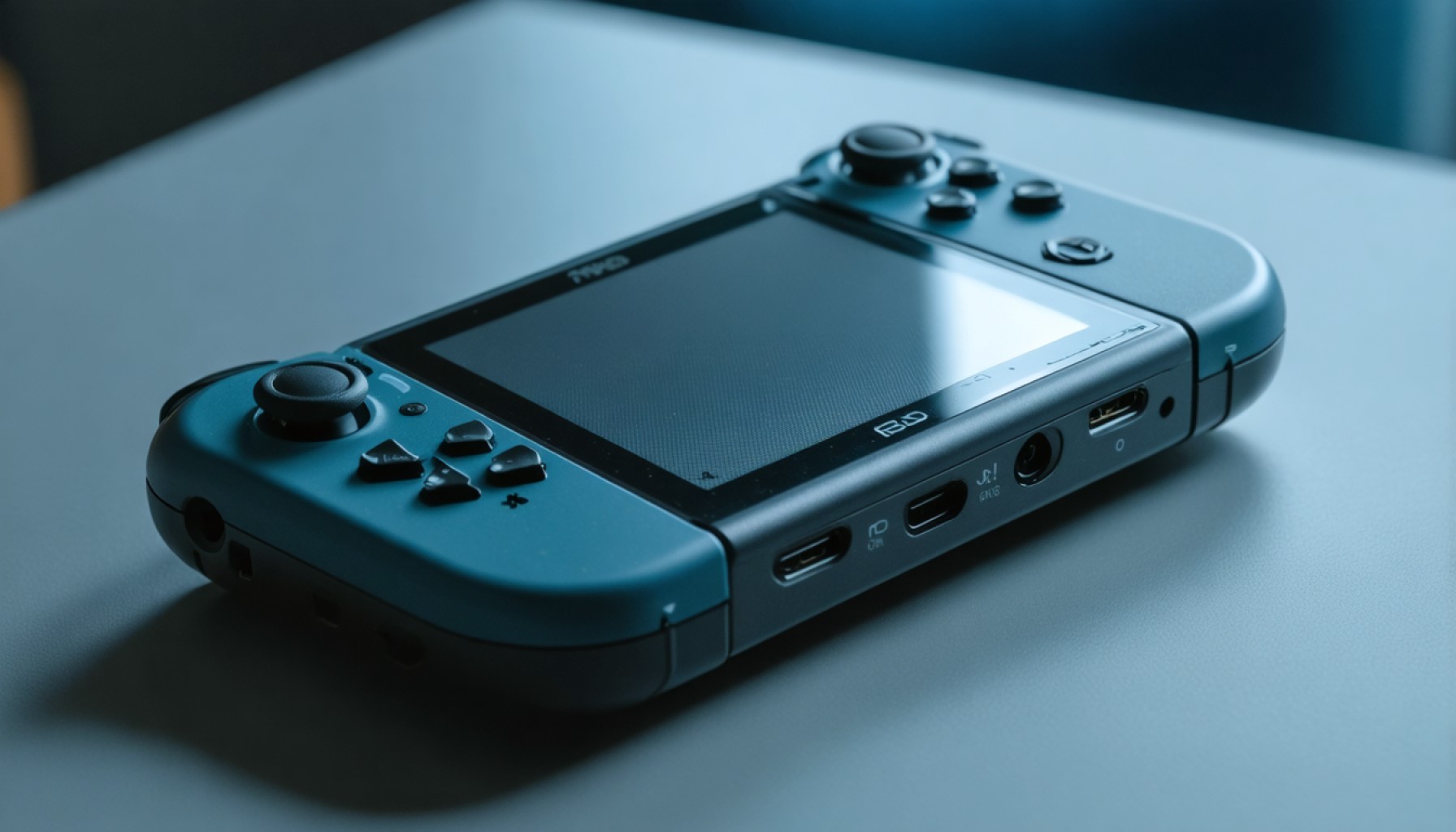- Nintendo pauses preorders for the Switch 2 due to potential tariff impacts on production costs.
- Tariffs on production in Vietnam and Cambodia could increase the console price from $449.99 to $660.
- Nintendo aims to navigate market conditions and fiscal uncertainties to remain competitive.
- Retailers like Best Buy and GameStop are adapting strategies amid shifting launch plans.
- Concerns rise over the economic impact on accessory prices, reflecting broader consumer frustrations.
- The launch of Mario Kart World at $79.99 highlights the tension over gaming costs.
- Global supply chain complexities underline the influence of policy changes on consumers.
A storm brews in the gaming world as Nintendo announces a strategic pause on preorders for the highly anticipated Switch 2. Market enthusiasts were already prepping for the April 9 kickoff, but the sudden undercurrent of President Trump’s sweeping tariffs casts a shadow over expectations. The bustling assembly lines in Vietnam and Cambodia, where the heart of Nintendo hardware is crafted, now face the stark reality of tariffs soaring as high as 46% and 49%, respectively. Such drastic economic maneuvers threaten to inflate the currently listed $449.99 price of the Switch 2 to an eye-watering $660.
Inside Nintendo’s corporate halls, tension is palpable. The decision to delay speaks volumes about the company’s cautious approach to evolving market conditions and fiscal uncertainties—especially as they aim to maintain their market position amidst fervent competition. Retail giants like Best Buy and GameStop are astir with activity, adjusting their strategies while consumers wait with bated breath.
Price tags for accessories might not escape this upheaval either. Historically, the gaming community has voiced concerns about escalating costs, and this situation risks amplifying those frustrations. The internet reverberates with the voices of fans pleading for fair pricing, while Nintendo’s YouTube channels become arenas for heated commentary, urging the company to reconsider its pricing strategies.
Against this backdrop, the cheeky allure of Mario Kart World—a flagship game for the new console priced at $79.99—seems to rub additional salt on the wounds of eager consumers. As the release day of June 5, 2025, still stands unchanged, the onus is on Nintendo to potentially recalibrate its pricing model in response to both consumer feedback and astronomical tariffs.
The heart of the story beats with the reminder of the intricacies in the global supply chain and the profound impact of policy changes on consumers worldwide. The Switch 2 saga, with its uncertainty and promises, showcases a vital lesson on the interconnectedness of politics, economics, and consumer zeal in this digital age.
Nintendo’s Switch 2 Release Faces Major Hurdles: What You Need to Know
Introduction to the Situation
Nintendo’s highly anticipated Switch 2 has hit a significant roadblock with a strategic pause on preorders. The gaming community is abuzz, not just because of the delay, but due to the potential price hike linked to President Trump’s newly imposed tariffs. With assembly operations primarily in Vietnam and Cambodia facing tariffs up to 49%, the base price of $449.99 could soar to an alarming $660. This development has cast uncertainty over both Nintendo and eager gamers worldwide.
Deep Dive: Facts and Implications
– Global Supply Chain Impacts: The tariffs underline the vulnerability of international supply chains. Nintendo, like many tech companies, relies on components and assembly from different global locations. These tariffs not only raise production costs but could also disrupt the timely availability of products.
– Economic Strategies at Play: Nintendo’s decision to delay preorders hints at a strategic reevaluation in response to potential market inflation. This gives insight into how companies must be agile in the face of sudden economic shifts. Navigating these waters requires balancing cost efficiency with maintaining a competitive edge.
– Consumer Price Sensitivity: With accessory prices likely to rise in alignment, consumer frustration could escalate. This situation isn’t new; historically, price changes have affected gaming console markets significantly, influencing consumer buying decisions and loyalty.
Real-World Use Cases and Trends
– Comparative Analysis Within the Gaming Industry: Competitors such as Sony and Microsoft may use this opportunity to capture market share. By maintaining stable pricing on their consoles, they can attract Nintendo’s disenchanted customer base.
– Retail Impact: Large retailers, including GameStop and Best Buy, are likely recalibrating their inventory strategies to accommodate potential demand fluctuations.
– Innovation in Production: The gaming industry might experience a shift toward diversifying manufacturing sites and investing in domestic production to mitigate dependence on international sites subject to tariffs.
Market Predictions and Industry Trends
– Price Forecasts: If tariffs persist, the gaming market could witness a temporary stalling or decrease in new console sales. However, as tariffs normalize or as companies find ways around these costs, a market rebound is possible.
– Adaptation by Developers: Given the price sensitivity, game developers might pivot to focus on digital services or subscription models, capitalizing on software sales to offset hardware revenue losses.
Pros & Cons Overview
– Pros: Potential for increased innovation and a push towards developing more resilient supply chains. Consumers might see shorter lead-times as companies adjust strategies for faster delivery methods.
– Cons: Short-term price hikes could alienate consumers, reducing sales and damaging brand reputation. Prolonged disruption may open doors for competitors to dominate the market.
Consumer Recommendations
– Smart Purchasing Decisions: Consumers should consider delaying the purchase of the Switch 2 until the pricing stabilizes. It’s advisable to monitor competitor pricing closely during this time frame.
– Engage with Retailers Directly: Stay informed on special promotions or retailer-specific offers that could mitigate price increases.
– Diversify Gaming Options: Explore alternative gaming consoles or PC gaming to avoid inflated prices on particular gaming hardware.
For more on the latest Nintendo updates, visit the official Nintendo website.
